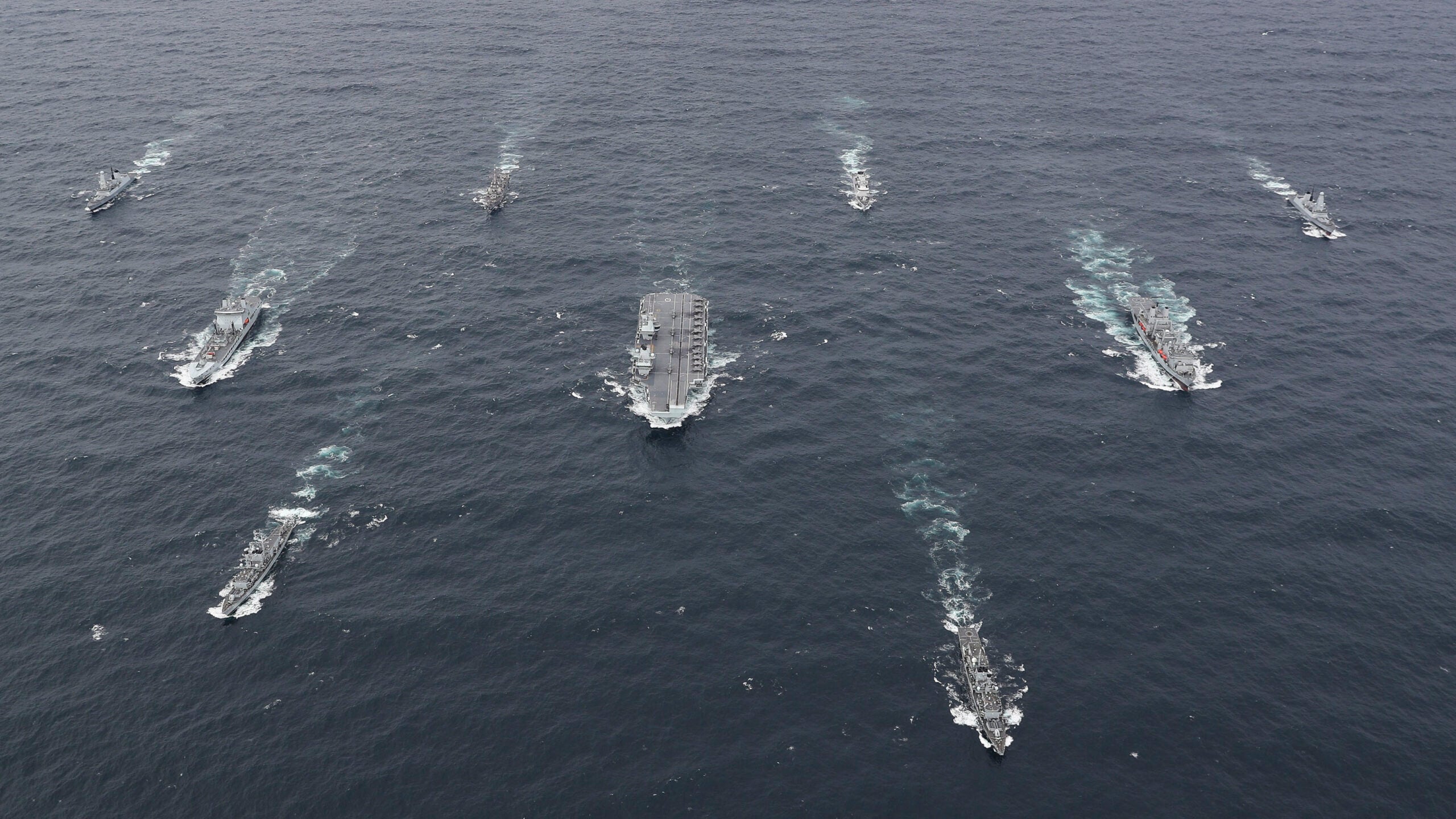The United Kingdom’s Royal Navy is back in the Carrier Strike business, having assembled a task force of warships assembled around the first-in-class aircraft carrier HMS Queen Elizabeth. The Royal Navy’s new Carrier Strike Group of nine warships — including the carrier — began working-up operations in the North Sea before embarking on its first maneuvers, Exercise Joint Warrior.
The Royal Navy first announced that HMS Queen Elizabeth was leading the Carrier Strike Group, which has a strength of approximately 3,000 personnel, in total, on October 5, 2020. There are 15 American and British F-35Bs embarked on the carrier, another major milestone in the ship’s history that you can read about more in this recent War Zone piece, and there are also 11 helicopters spread across the entire flotilla.
“The new UK Carrier Strike Group is the embodiment of British maritime power and sits at the heart of a modernized and emboldened Royal Navy,” Royal Navy Commodore Steve Moorhouse, commander of the Carrier Strike Group, said. “Protected by a ring of advanced destroyers, frigates, helicopters, and submarines, and equipped with fifth-generation fighters, HMS Queen Elizabeth is able to strike from the sea at a time and place of our choosing; and with our NATO allies at our side, we will be ready to fight and win in the most demanding circumstances. Carrier Strike offers Britain choice and flexibility on the global stage; it reassures our friends and allies and presents a powerful deterrent to would-be adversaries.”
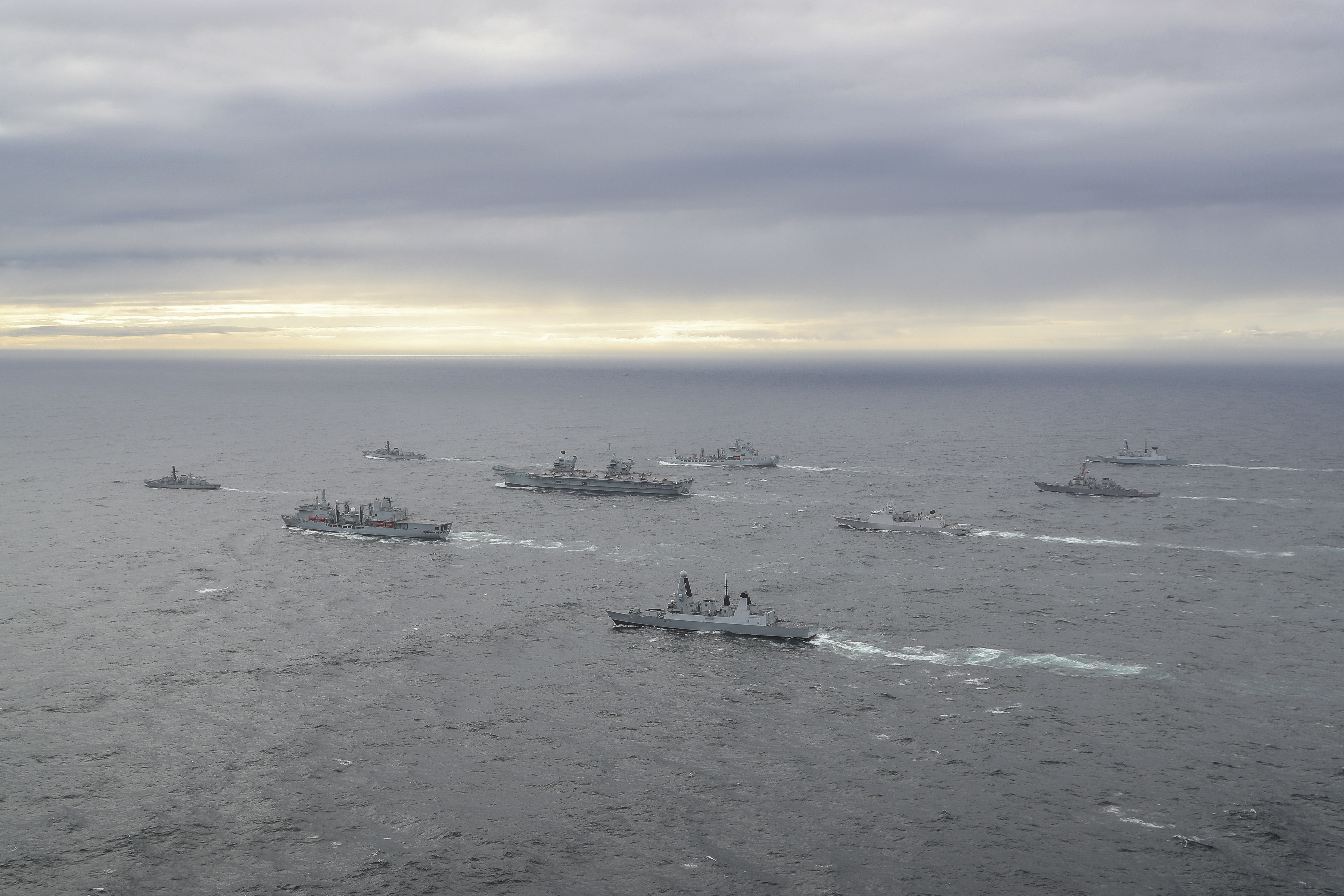


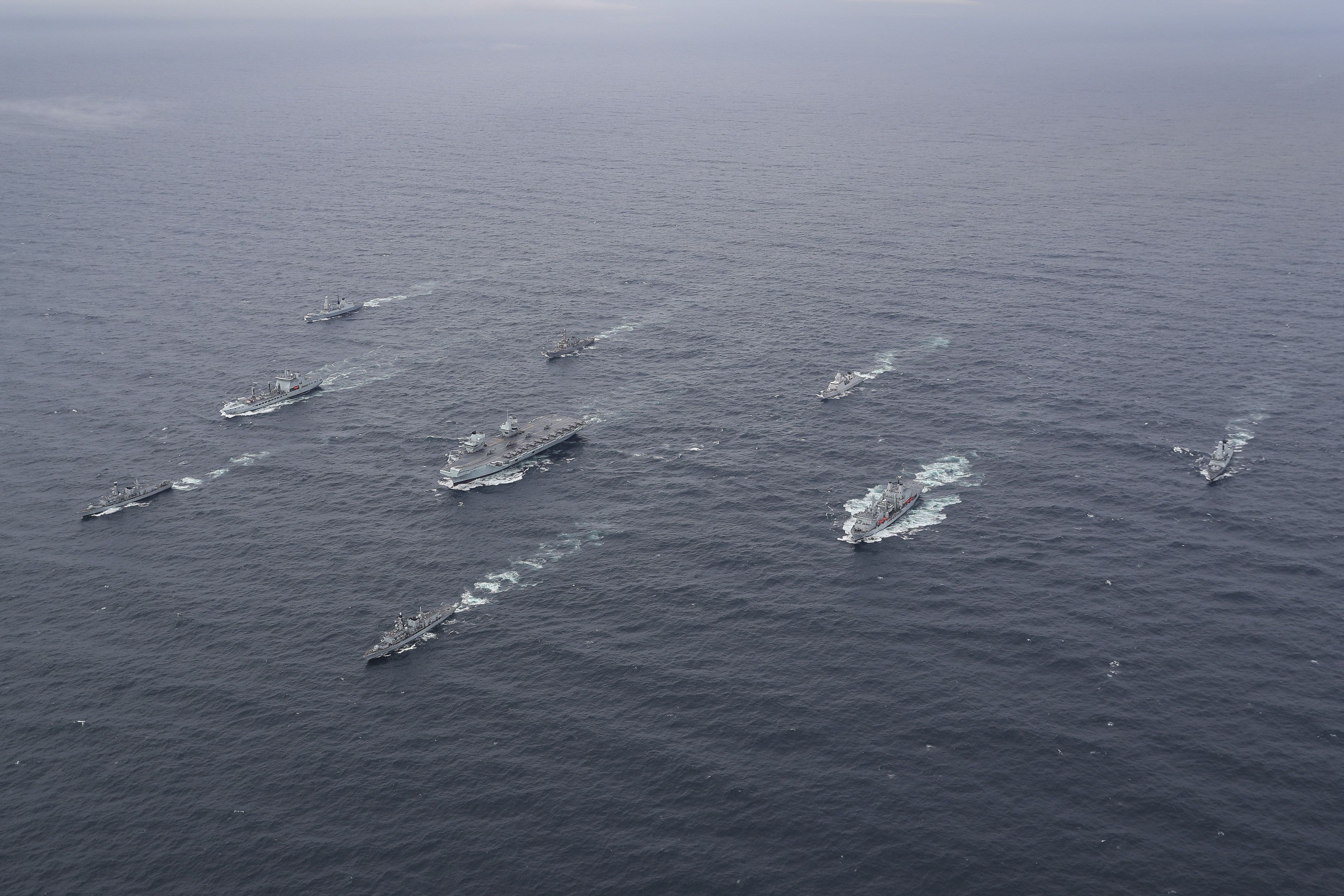
The Royal Navy describes the Carrier Strike Group as “the largest and most powerful European-led maritime force in almost 20 years.” It’s certainly an impressive task group, including two of the Royal Navy’s Type 45 destroyers — HMS Diamond and HMS Defender. The primary role of the Type 45s is air defense, for which they are equipped with Sampson active electronically scanned array radar and Sea Viper missiles, providing a protective umbrella around the carrier.

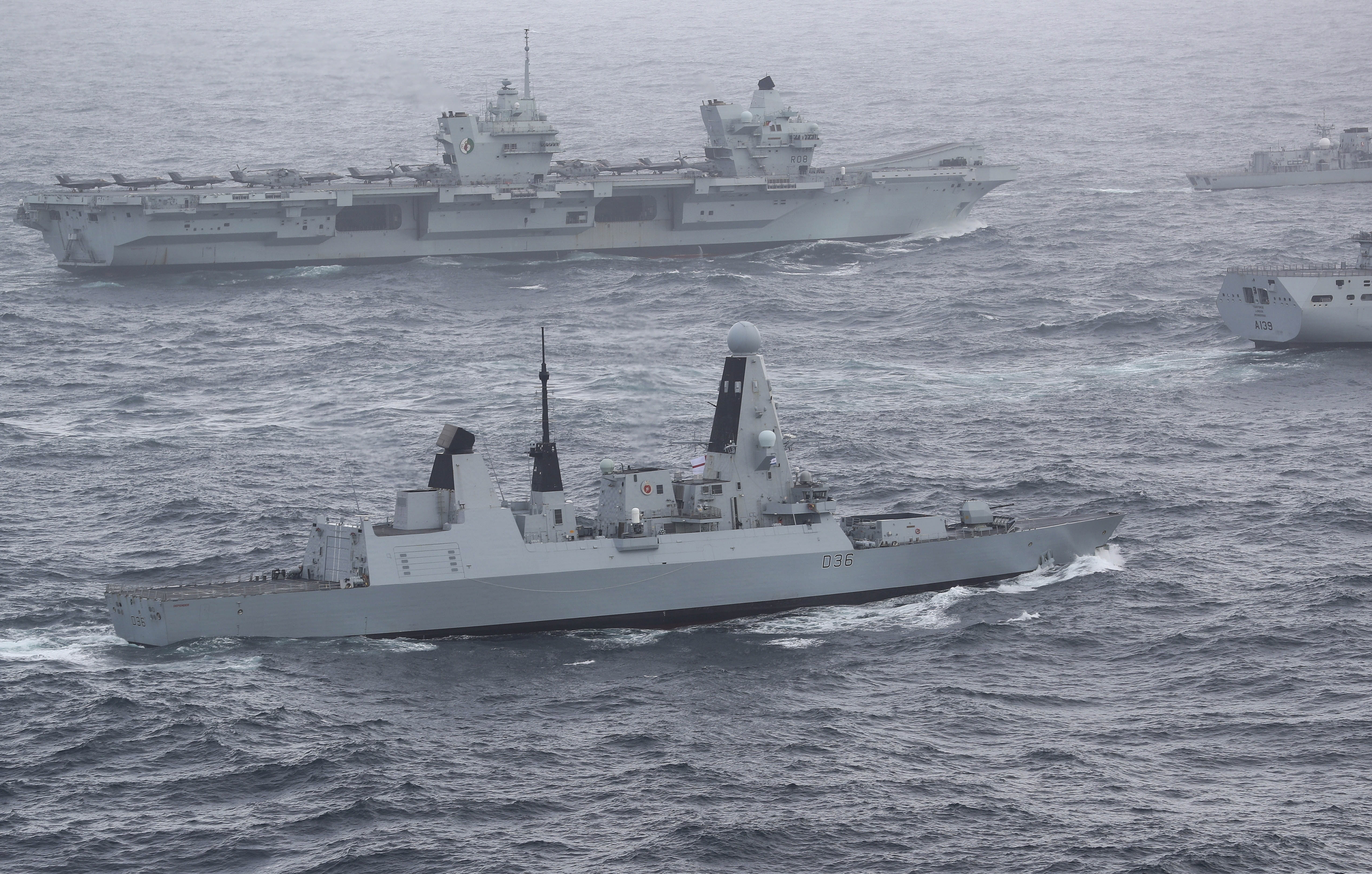
Alongside these are two Royal Navy Type 23 frigates, HMS Northumberland and HMS Kent, which are primarily used for anti-submarine warfare and equipped with Sonar 2087 towed array sonar and Merlin HM2 helicopters. Commodore Moorhouse describes the Type 23s as “the quietest and most effective submarine-hunters I could wish for.

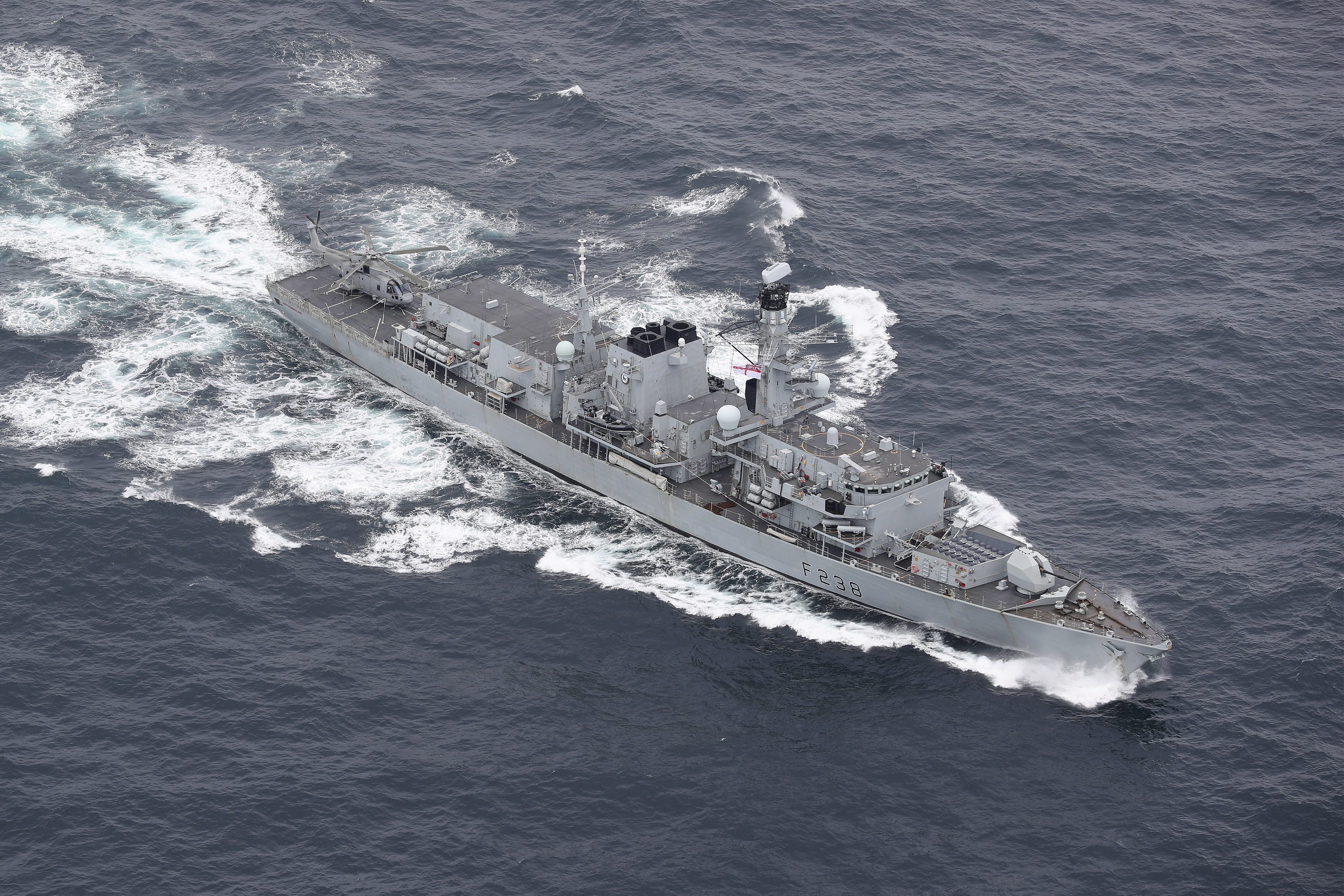
Foreign participation in the group comprises the U.S. Navy’s Arleigh Burke-class destroyer USS The Sullivans as well as the Dutch Navy’s De Zeven Provincien-class destroyer HNLMS Evertsen.

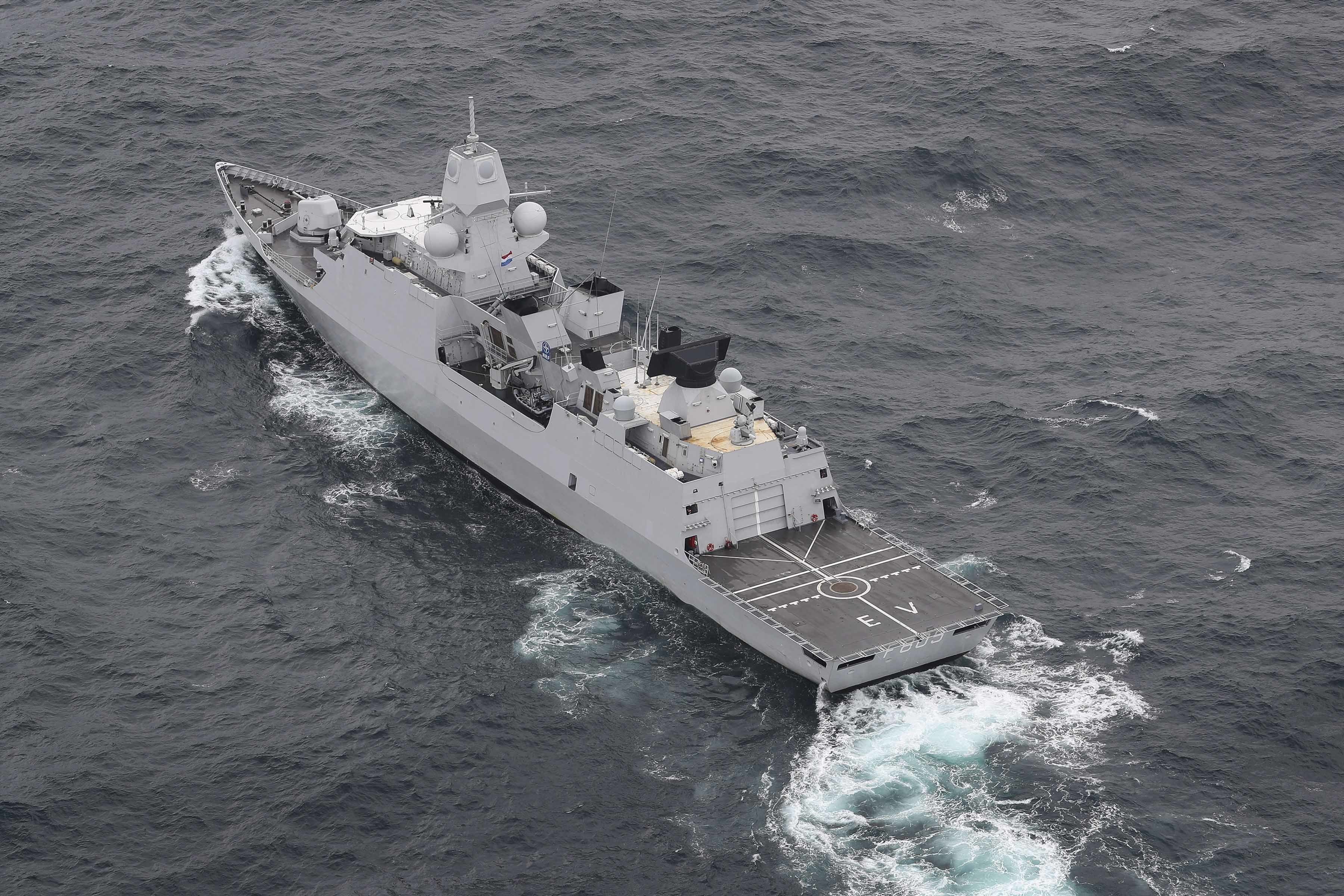
Below the waves, at least one submarine — almost certainly a Royal Navy Astute-class nuclear-powered attack boat — is accompanying the Carrier Strike Group. The presence of this tenth vessel was confirmed by a previous disclosure from the official Twitter account for the aircraft carrier.
Support vessels for the strike group are a pair of Royal Fleet Auxiliary ships, RFA Tideforce and RFA Fort Victoria, which will ensure operations run smoothly by supplying fuel, food, spares, and ammunition.

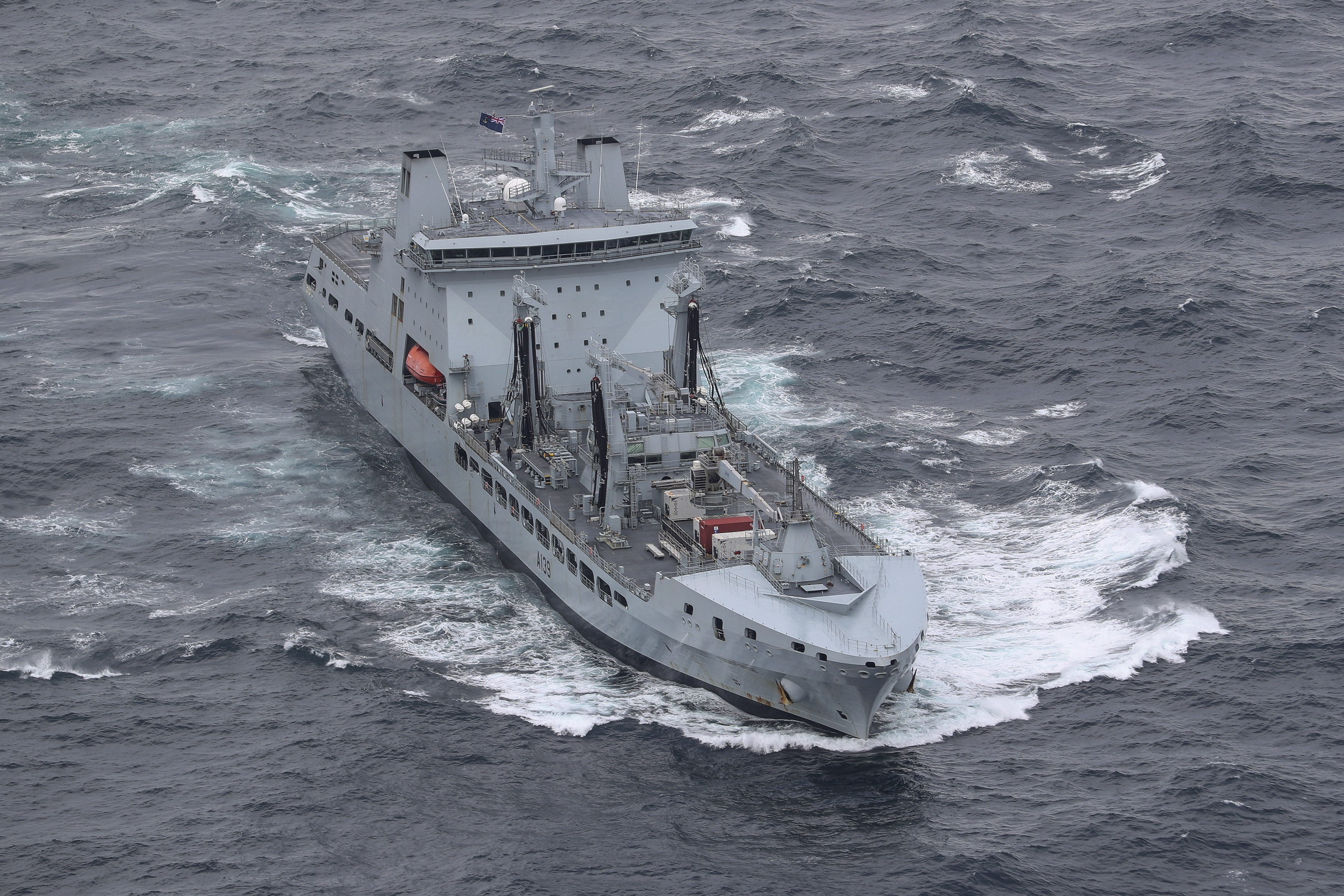
The centerpiece of the Carrier Strike Group is, of course, the carrier HMS Queen Elizabeth, with 15 F-35B Lightning II short take-off and vertical landing (STOVL) fighter jets on board — the largest force of fifth-generation jets to go aboard a flattop warship. These aircraft comprise 10 from the U.S. Marine Corps’ Marine Fighter Attack Squadron (VMFA) 211, the “Wake Island Avengers,” and five from the Royal Air Force’s No 617 Squadron, the “Dambusters.” You can read more on the carrier’s fledgling air wing, and about the challenges to the UK’s F-35B procurement program, in these previous War Zone articles.

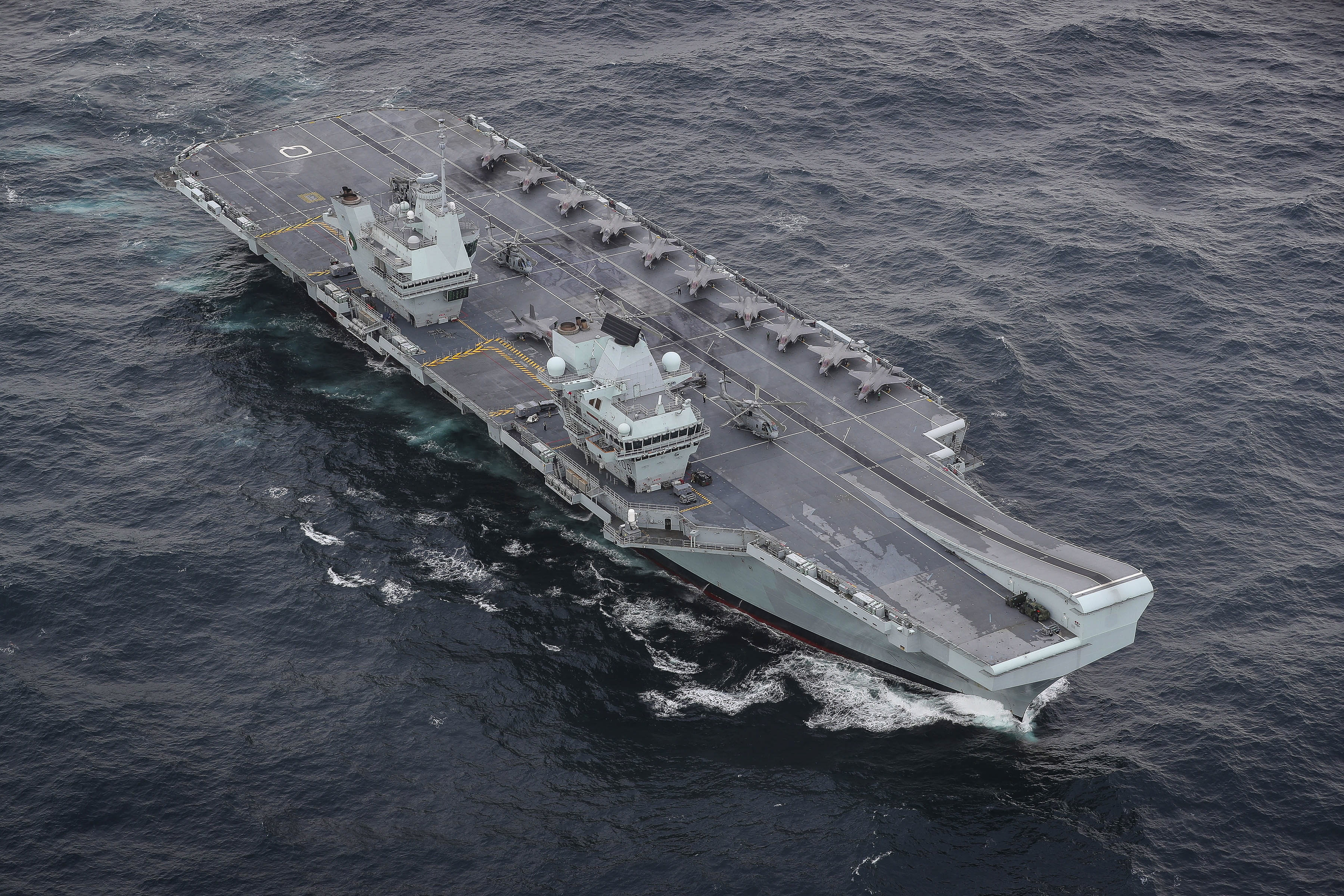

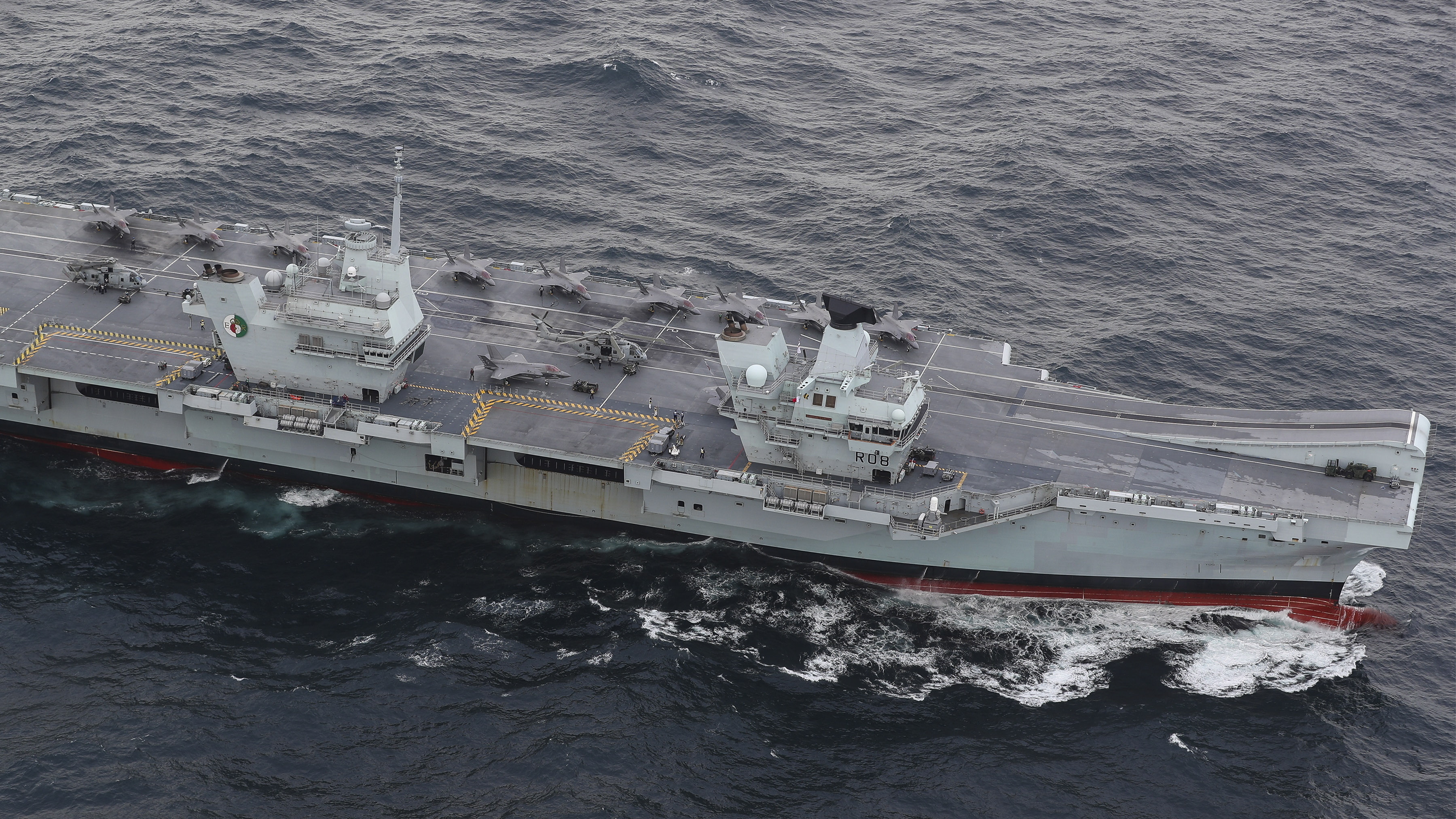

Notably absent, however, are the Merlin Crowsnest airborne early warning and control (AEW&C) helicopters. This program has suffered notable delays and the first such aircraft will not be available to the carrier until next year, with a limited capability at first. Full operational capability with the Crowsnest is not expected until May 2023.
As well as the missing AEW&C component — for the time being, at least — there’s the issue of escort capacity. As currently configured, the Carrier Strike Group is employing fully a third of the Royal Navy’s Type 45 fleet to perform this function. Critics may questions what happens to the Royal Navy’s overall capacity to conduct operations if any significant number of those ships are not available. It also suggests it would be almost impossible to operate two of these strike groups simultaneously.
Meanwhile, the Type 23s are perhaps less of an issue, since they are available in greater numbers, but those ships are aging and far less capable. They are supposed to be replaced by the forthcoming Type 26s and the Type 31s, but those ships are still years away from entering service.
The availability of Royal Navy escort vessels and the presence of US and Dutch warships in the current Carrier Strike Group points to the fact that the United Kingdom will likely look to allies to address this capacity issue, just as it has done with the U.S. Marine Corps F-35Bs now on HMS Queen Elizabeth’s deck.
The Royal Navy will have a prime opportunity to explore these issues in Joint Warrior, NATO’s largest annual exercise, which began on October 5, 2020, and will involve almost two weeks of maneuvers in the waters off the northwest and northeast coasts of Scotland. The exercise involves 11 nations (Australia, Belgium, Canada, Denmark, France, Lithuania, Netherlands, Norway, Portugal, United Kingdom, and the United States), providing a total of over 6,000 personnel, 81 aircraft, 28 ships, and two submarines.
Ahead of the exercise, F-35Bs from the carrier struck targets on a bombing range off the Scottish coast.
Joint Warrior itself has already included a simulated attack on the Carrier Strike Group by adversary aircraft, including contractor-operated Dassault Falcon bizjets from Cobham, plus Hawk T1 training jets from the Royal Navy’s 736 Naval Air Squadron, a specialist aggressor unit, whose aircraft are temporarily detached to Aberdeen International Airport in Scotland.
While Joint Warrior will be the high point of HMS Queen Elizabeth’s latest period at sea, it’s all part of the build-up to the milestone first operational cruise planned for 2021, when a similar Carrier Strike Group will voyage to the Pacific region in what will be a much more ambitious undertaking. Beyond that, however, the Royal Navy will need to address remaining capability and capacity gaps — including AEW&C cover and escort availability — in order to get the most out of its new carriers.
Contact the author: thomas@thedrive.com
